Abstract
The purple membrane of Halobacterium halobium contains only one protein, bacteriorhodopsin, which closely resembles the visual pigments of animals. Light flashes cause a rapid transient shift of its absorption maximum from 560 to 415 nm. This shift is accompanied by release and uptake of protons. Respiring cells acidify the medium in the dark; if they contain purple membrane their O2 consumption is reduced in the light. Starved or anaerobic cells containing purple membrane, in the absence of any apparent source of energy, generate and maintain a proton gradient across the cell membrane as long as they are exposed to light. We postulate that the light-generated proton gradient arises from a vectorial release and uptake of protons by bacteriorhodopsin, which is suitably oriented in the cell membrane and under continuous illumination oscillates rapidly between the long- and short-wavelength form. Preliminary results indicate that the gradient in H. halobium plays the central role in energy coupling attributed to such electrochemical gradients by Mitchell's chemiosmotic theory.
Keywords: halophilism, photosynthesis, chemiosmotic energy coupling, proton transport, rhodopsin
Full text
PDF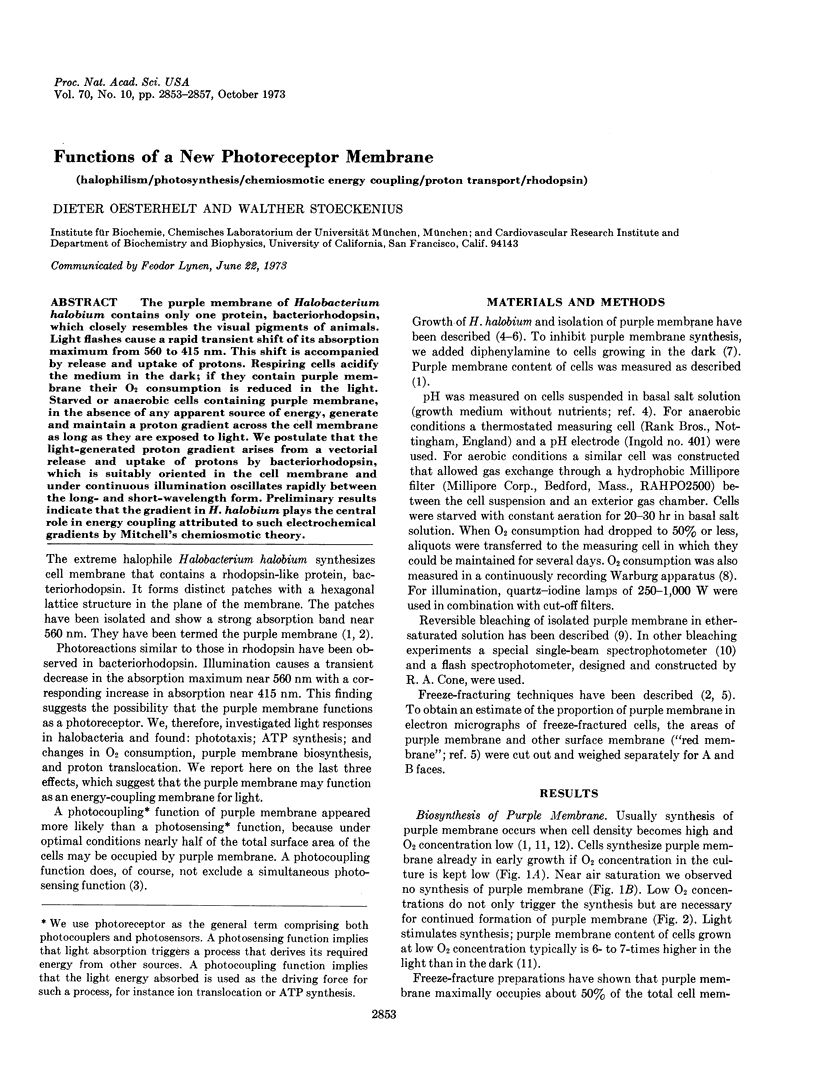
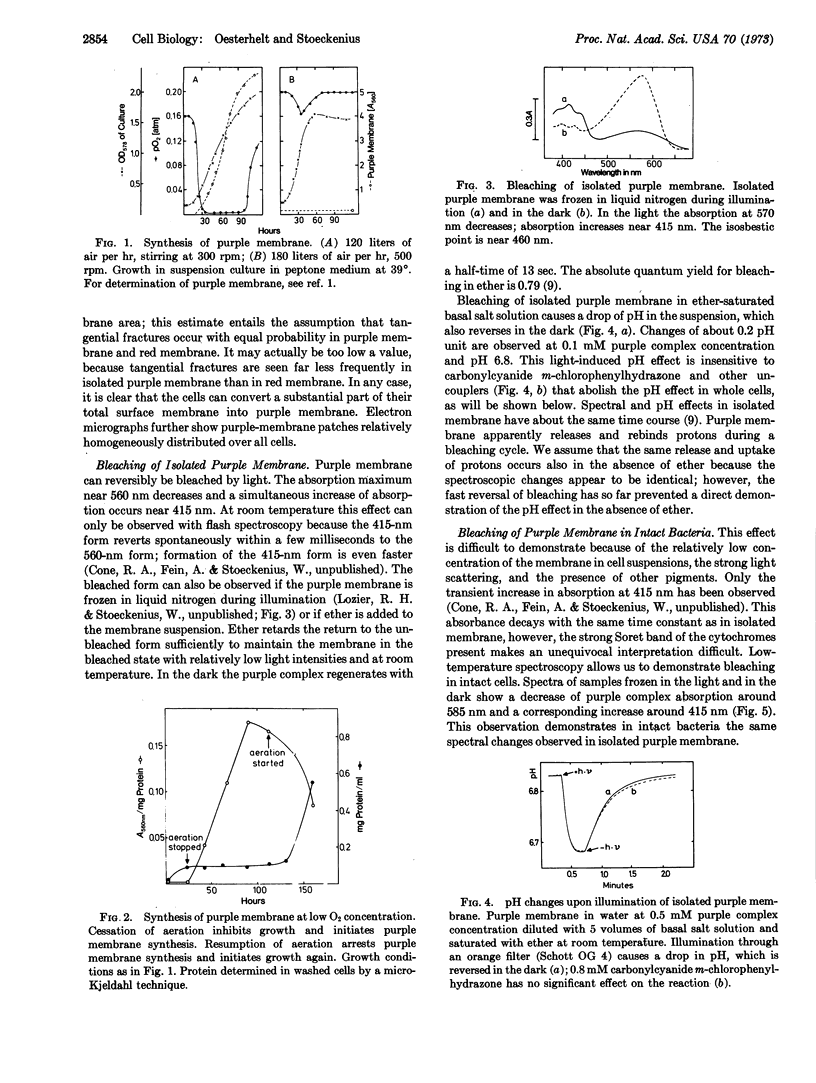
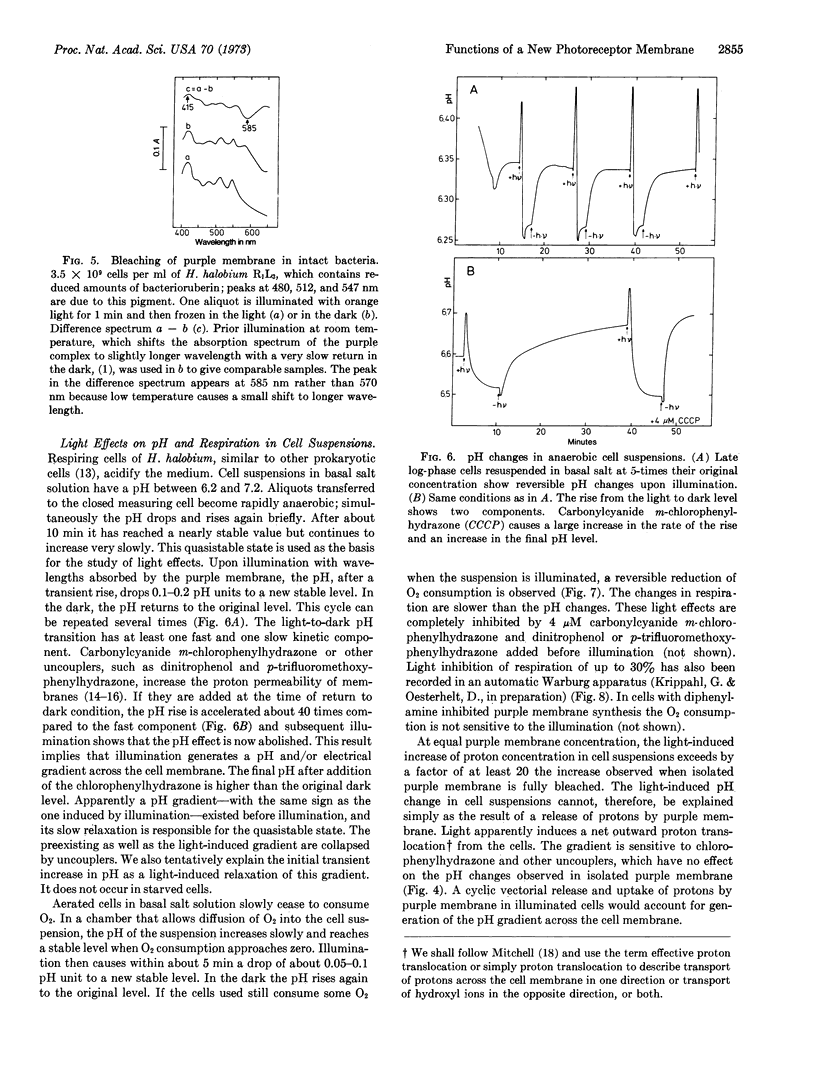
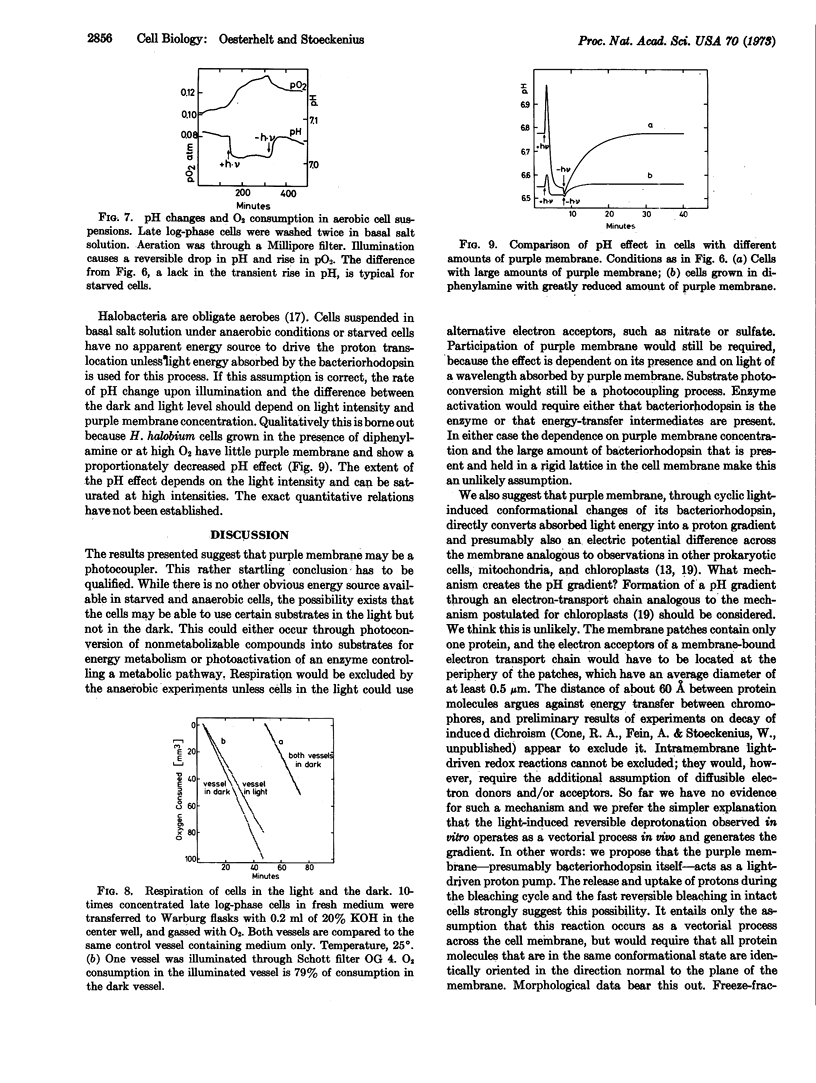
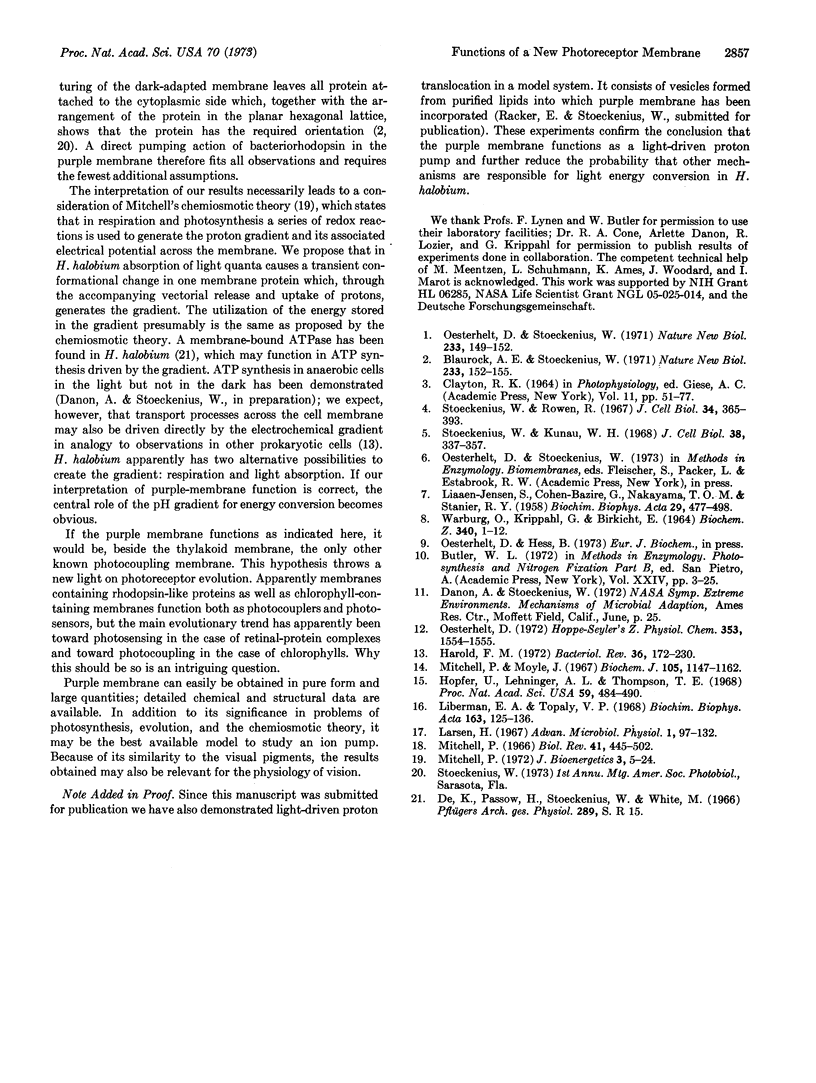
Selected References
These references are in PubMed. This may not be the complete list of references from this article.
- Blaurock A. E., Stoeckenius W. Structure of the purple membrane. Nat New Biol. 1971 Sep 29;233(39):152–155. doi: 10.1038/newbio233152a0. [DOI] [PubMed] [Google Scholar]
- Harold F. M. Conservation and transformation of energy by bacterial membranes. Bacteriol Rev. 1972 Jun;36(2):172–230. doi: 10.1128/br.36.2.172-230.1972. [DOI] [PMC free article] [PubMed] [Google Scholar]
- Hopfer U., Lehninger A. L., Thompson T. E. Protonic conductance across phospholipid bilayer membranes induced by uncoupling agents for oxidative phosphorylation. Proc Natl Acad Sci U S A. 1968 Feb;59(2):484–490. doi: 10.1073/pnas.59.2.484. [DOI] [PMC free article] [PubMed] [Google Scholar]
- JENSEN S. L., COHEN-BAZIRE G., NAKAYAMA T. O., STANIER R. Y. The path of carotenoid synthesis in a photosynthetic bacterium. Biochim Biophys Acta. 1958 Sep;29(3):477–498. doi: 10.1016/0006-3002(58)90003-9. [DOI] [PubMed] [Google Scholar]
- Liberman E. A., Topaly V. P. Selective transport of ions through bimolecular phospholipid membranes. Biochim Biophys Acta. 1968 Sep 17;163(2):125–136. doi: 10.1016/0005-2736(68)90089-8. [DOI] [PubMed] [Google Scholar]
- Mitchell P. Chemiosmotic coupling in energy transduction: a logical development of biochemical knowledge. J Bioenerg. 1972 May;3(1):5–24. doi: 10.1007/BF01515993. [DOI] [PubMed] [Google Scholar]
- Mitchell P. Chemiosmotic coupling in oxidative and photosynthetic phosphorylation. Biol Rev Camb Philos Soc. 1966 Aug;41(3):445–502. doi: 10.1111/j.1469-185x.1966.tb01501.x. [DOI] [PubMed] [Google Scholar]
- Mitchell P., Moyle J. Respiration-driven proton translocation in rat liver mitochondria. Biochem J. 1967 Dec;105(3):1147–1162. doi: 10.1042/bj1051147. [DOI] [PMC free article] [PubMed] [Google Scholar]
- Oesterhelt D. Die Purpurmembran aus Holobacterium halobium. Hoppe Seylers Z Physiol Chem. 1972 Oct;353(10):1554–1555. [PubMed] [Google Scholar]
- Oesterhelt D., Stoeckenius W. Rhodopsin-like protein from the purple membrane of Halobacterium halobium. Nat New Biol. 1971 Sep 29;233(39):149–152. doi: 10.1038/newbio233149a0. [DOI] [PubMed] [Google Scholar]
- Stoeckenius W., Rowen R. A morphological study of Halobacterium halobium and its lysis in media of low salt concentration. J Cell Biol. 1967 Jul;34(1):365–393. doi: 10.1083/jcb.34.1.365. [DOI] [PMC free article] [PubMed] [Google Scholar]
- Toeckenius W., Kunau W. H. Further characterization of particulate fractions from lysed cell envelopes of Halobacterium halobium and isolation of gas vacuole membranes. J Cell Biol. 1968 Aug;38(2):337–357. doi: 10.1083/jcb.38.2.337. [DOI] [PMC free article] [PubMed] [Google Scholar]
- WARBURG O., KRIPPAHL G., BIRKICHT E. QUANTENCHEMIE DER PHOTOSYNTHESE, AUTOMATISCH GESCHRIEBEN. Biochem Z. 1964 Jul 8;340:1–12. [PubMed] [Google Scholar]


